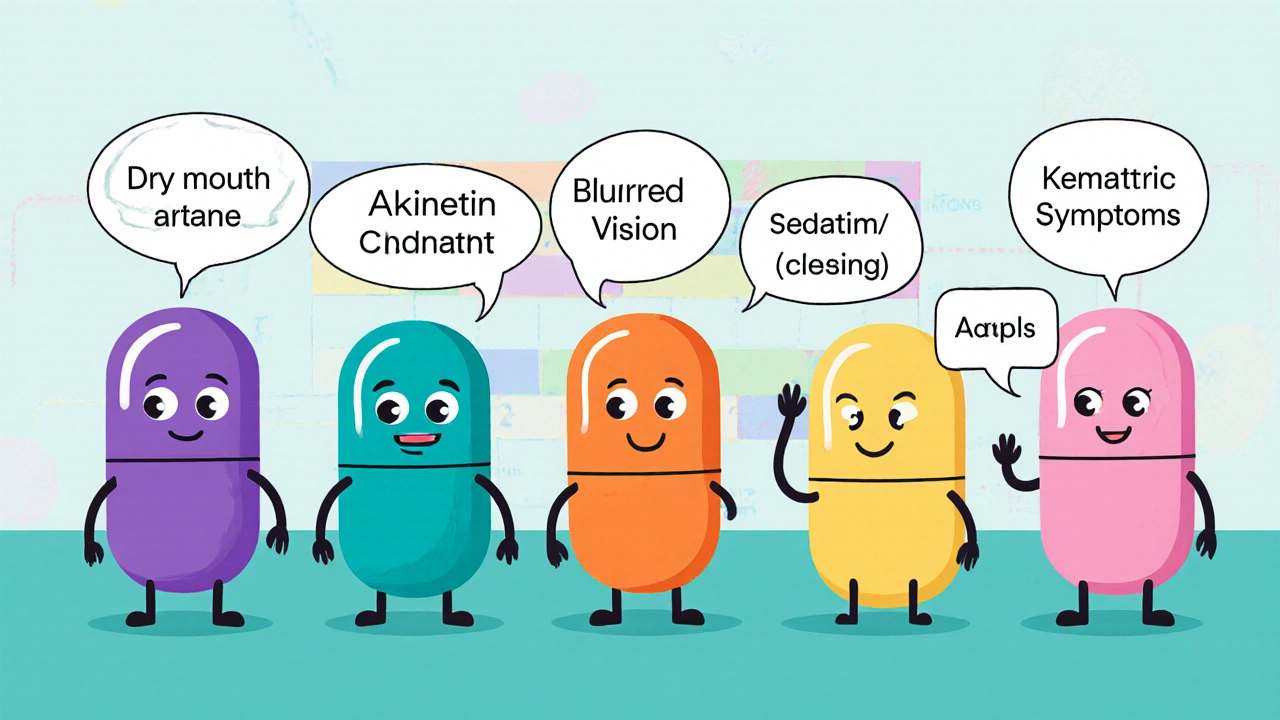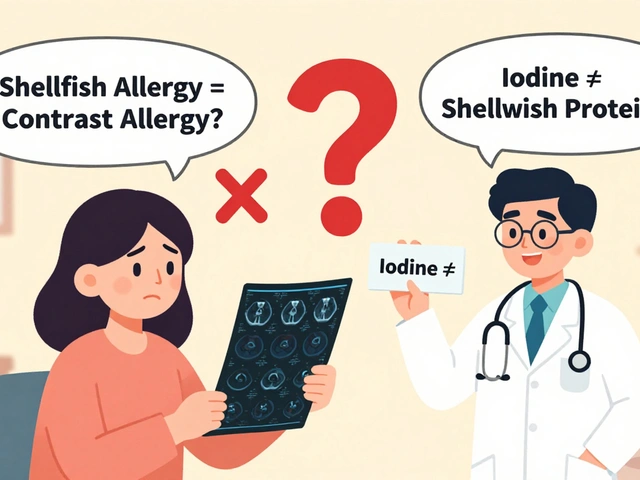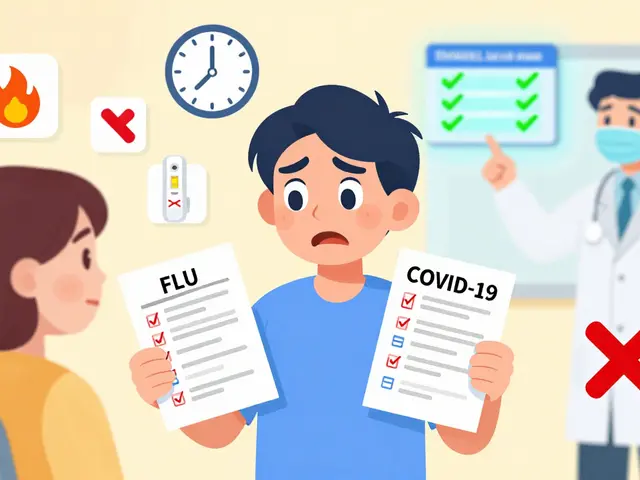Artane (Trihexyphenidyl) vs Other Parkinson’s Drugs: A Detailed Comparison

Parkinson's Drug Comparison Tool
Personalized Parkinson's Drug Comparison
When managing Parkinson’s disease, doctors often start with levodopa, but many patients need an extra boost to control tremor and rigidity. One of the classic add‑on options is Trihexyphenidyl, marketed as Artane. It belongs to the anticholinergic class and works by blocking muscarinic receptors in the brain, smoothing out the over‑active cholinergic signals that fuel tremor.
How Trihexyphenidyl Works: The Muscarinic Antagonist Angle
Muscarinic antagonist drugs that block the action of the neurotransmitter acetylcholine at muscarinic receptors are not new to Parkinson’s treatment. By dampening acetylcholine, they restore a better balance with dopamine, the neurotransmitter that’s deficient in the disease. This mechanism helps reduce tremor, especially in younger patients whose symptoms are dominated by shakiness rather than slowness.
Why Look for Alternatives?
Despite its benefits, Artane alternatives are often considered because trihexyphenidyl can cause a suite of side effects-dry mouth, blurred vision, constipation, and cognitive slowing, to name a few. Elderly patients, in particular, risk confusion or hallucinations. That’s why clinicians compare it with other anticholinergics or even non‑anticholinergic options before committing to a long‑term regimen.
Top Alternatives on the Market
The most frequently discussed rivals are benztropine, biperiden, procyclidine, and diphenhydramine. Below is a quick snapshot of each.
| Generic Name | Brand Name | Typical Dose (mg) | Onset of Action | Common Side Effects | Key Contra‑indications |
|---|---|---|---|---|---|
| Trihexyphenidyl | Artane | 0.5-10 | 30-60 min | Dry mouth, blurred vision, constipation, cognitive slowing | Glaucoma, urinary retention, severe heart block |
| Benztropine | Cogentin | 0.5-2 | 30-45 min | Heat intolerance, tachycardia, memory loss | Closed‑angle glaucoma, hyperthyroidism |
| Biperiden | Akineton | 2-8 | 45-90 min | Nausea, dizziness, urinary retention | Prostatic hypertrophy, severe constipation |
| Procyclidine | Kemadrin | 2.5-10 | 20-40 min | Dry mouth, blurred vision, psychiatric symptoms | Glaucoma, severe cardiac disease |
| Diphenhydramine | Benadryl | 25-50 (as needed) | 15-30 min | Sedation, anticholinergic load, anticholinergic delirium | Pregnancy (first trimester), narrow‑angle glaucoma |
Benztropine (Cogentin): The Most Direct Substitute
Benztropine an anticholinergic agent frequently used for Parkinsonian tremor and drug‑induced extrapyramidal symptoms shares a very similar mechanism with trihexyphenidyl but tends to have a slightly milder cognitive impact. In practice, clinicians start patients on 0.5 mg once or twice daily and titrate up to 2 mg if needed. Its shorter half‑life means fewer overnight anticholinergic effects, which is a plus for older adults who already struggle with insomnia.

Biperiden (Akineton): When You Need a Longer‑Acting Option
Biperiden an anticholinergic drug that provides sustained control of tremor over 12‑hour intervals can be handy for patients who dislike dosing more than twice a day. Typical dosing starts at 2 mg three times daily, with a maximum of 8 mg per day. Side‑effect profile mirrors other anticholinergics, yet it is often better tolerated in terms of dry mouth because of its slower absorption.
Procyclidine (Kemadrin): The ‘Hybrid’ Choice
Procyclidine sits somewhere between the classic anticholinergics and the newer agents that also have modest antihistamine activity. Its dual action can help with both tremor and occasional dystonia. Starting dose is 2.5 mg three times daily, maxing at 10 mg. Some users report less severe memory issues, but the trade‑off is a higher chance of psychiatric side effects like vivid dreams or mild confusion.
Diphenhydramine (Benadryl): An OTC Work‑Around
When prescription options are unavailable or too costly, Diphenhydramine an over‑the‑counter antihistamine with strong anticholinergic properties sometimes doubles as a Parkinson’s adjunct. It’s cheap and widely accessible, but the sedation it causes can be a deal‑breaker for daytime use. Rarely, high‑dose chronic use leads to a cumulative anticholinergic burden that mimics the cognitive decline seen with prescription agents.

How to Pick the Right Alternative for You
- Assess Age and Cognitive Baseline: Younger patients (<65) often tolerate anticholinergics better; older adults should lean toward the lowest‑dose option or a non‑anticholinergic.
- Check Co‑morbidities: Glaucoma, urinary retention, or severe cardiac disease rule out many of these drugs.
- Consider Dosing Convenience: If twice‑daily dosing is a hassle, Biperiden’s longer action may win.
- Review Side‑Effect Tolerance: If dry mouth is intolerable, Benztropine may be preferred; if sedation is a bigger concern, steer clear of Diphenhydramine.
- Cost & Insurance Coverage: Generic versions of Trihexyphenidyl and Benztropine are usually cheap, while Procyclidine can be pricier.
Working with a neurologist to balance these variables ensures the chosen medication fits your lifestyle and health profile.
Potential Pitfalls and How to Avoid Them
- Over‑anticholinergic load: Using two anticholinergic drugs simultaneously (e.g., Artane plus diphenhydramine) can precipitate severe confusion. Keep a medication list and flag any overlapping properties.
- Rapid dose escalation: Jumping from 0.5 mg to 5 mg of trihexyphenidyl in a week can cause abrupt blood pressure changes. Titrate slowly, usually 0.5 mg every 3‑4 days.
- Ignoring contraindications: Patients with narrow‑angle glaucoma must avoid all anticholinergics; an eye‑exam before starting is essential.
- Missing the “wear‑off” window: Some patients lose tremor control before the next dose. Adjust timing or switch to a longer‑acting agent like Biperiden.
Bottom Line: Personalized Choice Beats One‑Size‑Fits‑All
There’s no universally “best” alternative to Artane. The decision hinges on age, side‑effect tolerance, comorbid conditions, dosing preferences, and cost. By weighing each factor, patients and clinicians can land on a regimen that eases tremor without trading off quality of life.
Can I switch from Artane to Benztropine without a washout period?
Generally, you can transition directly because both drugs share the same anticholinergic class. However, start the new medication at the lowest dose and monitor for overlapping side effects for the first week.
Is diphenhydramine a safe over‑the‑counter alternative?
It can work in a pinch, but the sedative effect and cumulative anticholinergic burden make it unsuitable for regular, long‑term use, especially in older adults.
What are the warning signs of anticholinergic toxicity?
Look for severe dry mouth, extreme constipation, blurry vision, rapid heart rate, confusion, hallucinations, or urinary retention. If any appear, contact your doctor immediately.
Do any of these drugs interact with levodopa?
Anticholinergics don’t directly interfere with levodopa metabolism, but they can mask some of the motor fluctuations. Always discuss dosage timing with your neurologist.
Is it worth trying a non‑anticholinergic option first?
Yes, especially if you have cognitive concerns. Options like amantadine or controlled‑release dopaminergic agents can address tremor with fewer anticholinergic side effects.
6 Comments
Aaron Kuan
Trihexyphenidyl dazzles the tremor‑ridden, but its dry‑mouth side‑effects linger like an unwanted guest.
Nathan Comstock
When it comes to tackling Parkinson’s tremors, nothing screams American ingenuity like the classic Artane formula, a testament to our relentless pursuit of sharper minds and steadier hands.
We’ve engineered this anticholinergic marvel to out‑perform foreign alternatives, proving once again that home‑grown solutions beat imported hype.
Doctors under our flag trust it to silence shakes while preserving the roar of liberty in the bloodstream.
Terell Moore
Oh, how delightfully original to compare Artane with its cousin anticholinergics as if we’re choosing flavors of ice‑cream at a parade of neurologic indulgence.
Let’s start with the obvious: trihexyphenidyl’s dry mouth is practically a badge of honor for anyone who enjoys feeling like a desert wanderer.
And the blurred vision? It’s just nature’s way of reminding us that we, too, can see the world in a soft, artistic blur.
Sure, the elderly might suffer confusion, but isn’t that just a gentle reminder that life’s mysteries are best pondered in a haze?
Benztropine may boast a milder cognitive impact, yet it also promises the thrilling experience of tachycardia, because nothing says “I’m alive” like a racing heart.
Biperiden’s longer act gives you the luxury of shaking off dosage anxiety for twelve whole hours – a true marathon for the mind.
Procyclidine’s psychiatric side‑effects add a dash of drama, perfect for those who crave vivid dreams over bland reality.
Diphenhydramine, the over‑the‑counter hero, gifts us the sweet embrace of sedation, ensuring any tremor is drowned out by slumberland.
In the grand theater of Parkinson’s management, each drug is merely an actor delivering its monologue, while we, the audience, applaud the chaos.
So choose your antagonist wisely, or better yet, embrace the symphony of side‑effects and call it a day.
After all, why settle for a single story when you can juggle a circus of anticholinergic anecdotes?
Remember, the true art lies not in eliminating tremor, but in mastering the flamboyant dance of adverse events.
Your doctor may hand you a prescription, but you hold the pen that writes the narrative of your own pharmacologic saga.
Thus, let us toast to trihexyphenidyl and its brethren, the unsung poets of the nervous system.
May their muscarinic blockade forever echo in the halls of medical folklore.
Amber Lintner
Sure, the docs love Benztropine, but the real secret weapon is the cheap over‑the‑counter diphenhydramine-trust me, the sedation is a small price for freedom from tremor.
Why settle for polished prescriptions when a midnight dose of Benadryl can turn the tables on those stubborn shakes?
Lennox Anoff
One cannot discuss anticholinergics without confronting the moral weight of prescribing them to the vulnerable.
We have a duty to protect seniors from the fog of confusion that these drugs so readily induce.
Choosing an alternative is not merely clinical; it is an ethical imperative that reflects our respect for dignity.
Bianca Larasati
Let’s keep the conversation positive-anyone who’s tried Artane and found relief deserves a high‑five!
Remember, dosage tweaking can often minimize those pesky side‑effects.
Stay hopeful, keep communicating with your doctor, and you’ll find the balance that works for you.






Write a comment